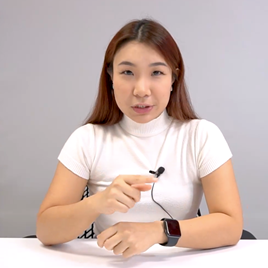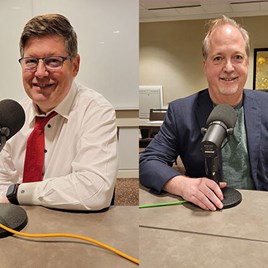May 01 2024 / Round the Table Magazine
Unlock continuous improvement by tweaking your process
Topics Covered
You documented your process, listed every step in the workflow, assigned responsibility for each task, and you track your system with checklists or workflow software. Having a process is part of the battle of continuous improvement. Being able to course-correct is the other part.
The culture of being consistent, avoiding mistakes and keeping clients happy demands tweaking and regularly finding ways to run better and smoother. That task could require adding a technology tool or something as simple as adjusting the workflow by amending a step or eliminating a procedure that was wasting time. Beginning your fix with employee feedback can be a valuable source of information about what is broken or missing.
Audit thyself
Even the best system in the world won’t work if your staff hasn’t bought into it. Looking inward can help identify which process in your practice is working and which needs to be improved.
“Anything that is repetitive definitely calls for an opportunity to see if it can be automated, or if we can use some kind of technology to make it less painful for the person who has to keep doing it,” said Chee Hong Gan, ChFC, CLU, a 15-year MDRT member from Singapore. “The staff who are doing these tasks give me feedback because we meet on a weekly basis. They can bring up, for example, that we’re getting new requests from clients right now and that is not something that our system provides for. It’s not always a software thing. Sometimes it’s a system thing, and the solution could go back to reevaluating the thinking or the design that went into the process before it was implemented.”
Meredith Gail Langus, FSCP, tweaks her processes by asking her assistant what she hates doing.
“I’ll ask her to give me feedback so we can change the way we’re doing something so it works better for her. Sometimes I might need to take that responsibility back onto myself because if their heart is not into doing a certain thing, they’re not going to do it right. Their hearts need to be as invested in the business as you are, so I try to work with her and figure out what we can change, so we can be more efficient,” said the 12-year MDRT member from White Plains, New York, USA.
Brad Isaac, GDFP, a 16-year MDRT member from Abbotsford, Victoria, Australia, started more than eight years ago grouping frontstage and backstage processes into a system on a PDF that he branded internally as the Clarity Advantage. He concocted the idea to create a digital manual that lives in the cloud, and his staff wrote most of it, as they were best suited to write the playbook for the tasks they are actually doing.
“This is the document that runs everything that we do, and I’m always open to challenging it and changing the document if we can do something better,” Isaac said. “It’s digitalized; it’s always ongoing and changing. Anything that needs to happen has a process, whether it’s doing a fee disclosure statement or preparing a strategy paper for the paraplanner to put advice together. It’s pretty cool how we can open the document to a backstage process and then to a particular part of the business, and I’ll see Gavin working on it, or our paraplanner working on it. Everything is documented, so if someone walks out of the business tomorrow and a new person comes in, there is a document that tells them how to do everything,” Isaac said.
He added that Clarity Advantage was integrated with a practice management CRM called Worksorted and digitally runs the backstage processes. Task management and checklists now are automated, which “enables us to scale our operations and prepare for future growth as we welcome additional advisors into our practice.”
What is your baseline?
To be process driven, you need to measure the progress toward your goals. Mark D. Olson, CFP, MSFS, and his team of 10 advisors and assistants handle more than 125 plans a year, and his practice’s workflow app is set up so after each task is completed, a deadline is established to finish the next procedure. One yardstick for measuring success is whether they are moving the client from first meeting to delivering the financial plan document within three months. Any longer and the client might lose interest.
“The closer we can get to that the better, and that’s very measurable,” said the 25-year MDRT member from Austin, Texas, USA. “We can look and see where there are the cases that took double the amount of time and where did it tie up. Did it tie up with a particular advisor, and did it tie up because the client didn’t get us the information? We’re able to see where it is, and then we can try to shorten the time. That’s how we know whether we’re being successful.”
The number of client meetings, calls being made and conversions are typical metrics for sales activity. Jonathan Peter Kestle, CLU, B Com, an 10-year MDRT member from Ingersoll, Ontario, Canada, was thinking about how else to measure his office’s responsiveness and service by perhaps tallying the number of dropped and missed calls and voicemails received during a certain period. That was a topic during one of his team’s hour-long staff meetings, held three times per week, to tackle high and medium priorities.
“I’ve always had a vision of how I wanted things to go. So, I try to drive that vision and include the staff as much as possible on the solution,” Kestle said. “For instance, we might have a regulation that causes new paperwork, and this paperwork was missed three times in the past month because it’s a new process. How can we make sure the paperwork gets included? The teams are pretty vocal about these things, and ultimately, it’s their role and responsibility on the administration side. I want them to be the ones with the solution, and I encourage them to not just come with problems but also a couple of possible solutions,” Kestle said.
Test run
Another tweaking tactic he uses is creating a fake client who takes advantage of all the products and services his firm provides. Then Kestle works with his team to design and test the process around make-believe transactions.
“The idea was to create an ideal client that represents everything that we do … they have insurance, all types of investment accounts, and even has accounts that have closed that we still need to see. They have a compliance file, CRM profile, etc.,” he said. “Then, from a technology/process standpoint, we’ll say, ‘How do we prospect this person? How do we have that first meeting? How do we present all the recommendations, implement the advice given, and design a service model to support them ongoing?’ It’s sort of easier to create something fake and design the process around the make-believe client than to find a real client in the book and do it that way,”
A work culture that prioritizes solving problems rather than casting blame will encourage continuous improvement. Terri E. Krueger, ChFC, a 10-year MDRT member from Syracuse, New York, USA, will do a test run of the processes herself just to see if there are any inefficiencies. She’ll also tell her assistants if they see something that is not right, or they have a better way to do it, to let her know.
“We’re not perfect, but together we’re going to make it look like we are. So, I want them to find my mistakes, so they won’t feel bad when I go to them and say, ‘Hey, you missed this.’ They know that we’re a team, and there’s no finger-pointing,” Krueger said.
Course-correction is a necessity, but be careful of getting sucked into trying to reinvent the wheel, or you might be spending too much time in the process-creating business rather than being an advisor. Still, expending the effort to ensure your practice is operating with a dynamic and productive business management system can pay off in more ways than by just being efficient.
“Having a process in place has value,” Isaac said. “That definitely could be an additional multiple should you sell your business one day.”














![Understanding the reasons behind policy surrenders in India and how to avoid them [Ankita Agarwal]](https://www.mdrt.org/globalassets/digizuite/32751-en-india-video-interview---ankita-agarwal-thumbnail.png?height=268&crop=0,0,268,268)
![The shifting sands of wealth management [Ramesh Kumar Damani]](https://www.mdrt.org/globalassets/digizuite/32748-en-india_video-interview_ramesh-damani-thumbnail.png?height=268&crop=0,0,268,268)
![Leveraging social media for client acquisition [Ankit Goyal]](https://www.mdrt.org/globalassets/digizuite/32753-en-india_-video-interview_ankit-goyal-thumbnail.png?height=268&crop=0,0,268,268)